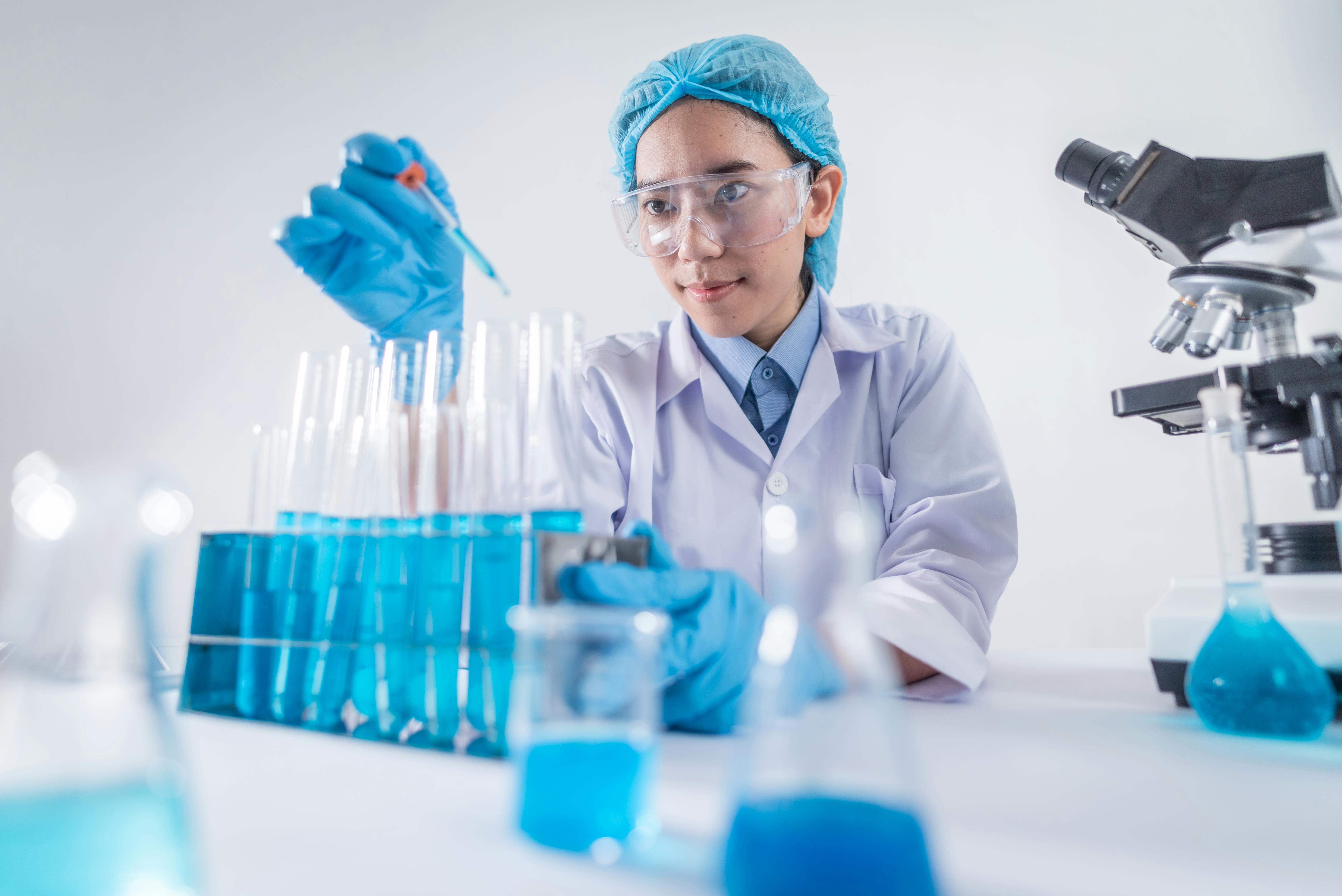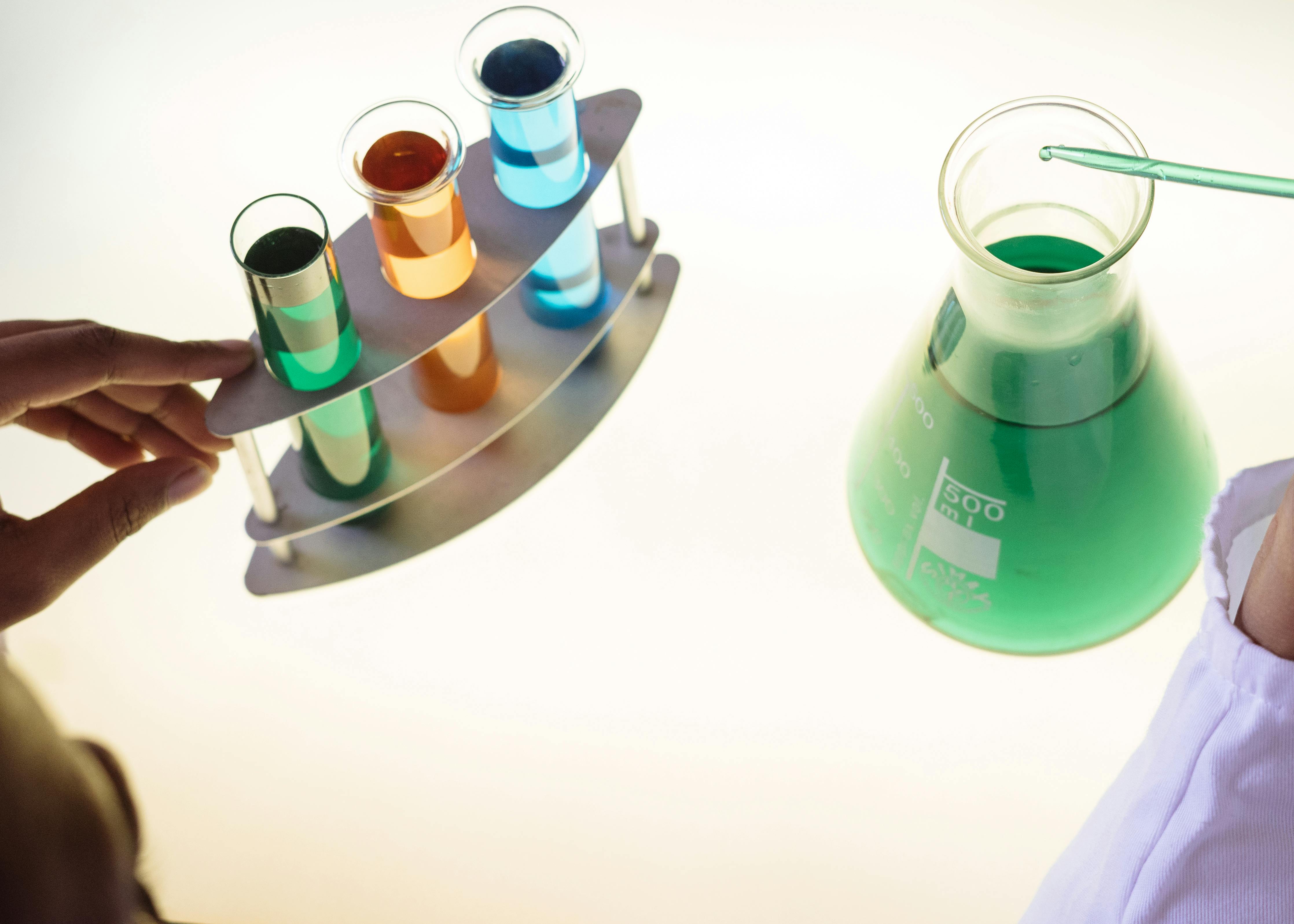Distillation is an essential process in chemistry that involves separating a mixture of liquids based on their different boiling points. It is a fundamental laboratory technique used to purify or separate liquid mixtures. The process works by heating the mixture, evaporating the more volatile components, and then condensing them, allowing for separation of the components. Distillation is used in many industries for a variety of products, from gasoline to alcoholic beverages. In this article, we’ll discuss how distillation works in more detail and how it can be applied in the laboratory setting.Distillation in chemistry is a process of separation of substances through the differences in their boiling points. It is used to purify liquids by separating them into different components, and it is also used to concentrate solutions by removing water. Distillation relies on the volatility of the components of a mixture, which means that the components with lower boiling points will evaporate first, while those with higher boiling points will remain liquid.
What is the Purpose of Distillation?
Distillation is a process used to purify liquid mixtures by heating them and condensing the vapor. In essence, it allows for the separation of liquids based on their boiling points. The main purpose of distillation is to separate a liquid mixture into its component parts, or fractions. This process can be used for a variety of purposes such as producing fuel, extracting essential oils, separating alcohol from water, and purifying drinking water. Distillation also has applications in chemistry and biochemistry, where it can be used to separate complex mixtures or isolate compounds.
The most common use of distillation is in the production of alcoholic beverages. By heating a mixture of alcohol and water, distillers are able to separate out the alcohol, leaving behind the undesirable impurities in the water. Distilling also allows for the production of higher proof spirits such as whiskey or vodka. Other examples include extracting essential oils and fragrances from plants or producing fuel such as gasoline or diesel fuel.
In addition to these practical applications, distillation has also been used to purify drinking water and make it safe for human consumption.
How Does Distillation Work Physically?
Distillation is a process in which a liquid is heated and then cooled to separate it into its component parts. The heating causes the component parts of the liquid to evaporate, while cooling causes them to condense. This process is used to purify liquids, as the component parts can be separated and collected at different temperatures. When heated, the component parts of the liquid will evaporate at different temperatures, allowing them to be easily separated. When cooled, they will condense back into liquid form. This process can be repeated multiple times in order to achieve a higher level of purity for the desired component part.
Distillation is used in many industries, ranging from food production to chemical manufacturing and beyond. It is also commonly used in home brewing and distilling alcohols. In these processes, distillation is used to separate ethanol from other compounds such as water or methanol. Distilling alcohols requires careful monitoring of temperatures throughout the process in order to ensure that all desired components are collected at the right temperature.
Distillation is also used in water purification systems, as it can be used to
What Happens During the Distillation Process?
Distillation is a process of separating and purifying liquids by heating them to a boiling point and then condensing the resulting vapor, allowing the components of the liquid to be separated. Distillation is used to purify liquids, extract essential oils from plants and concentrate alcohol. In distillation, a liquid mixture is heated and vaporized. The vapor is then cooled and condensed into a separate container, leaving behind any impurities that may have been present in the original mixture.
The process of distillation works because different components of a liquid have different boiling points. As the liquid mixture is heated, each component will vaporize at its own particular temperature. This allows for individual components to be separated from one another without having to physically remove them. Once the vapor has been cooled and condensed, it can be collected in a separate container for further use or analysis.
Another type of distillation process is fractional distillation which uses a fractional column or fractionating column to separate two or more components with very similar boiling points. In fractional distillation, more efficient separation occurs as each component passes through different sections of the column
What Are the Different Types of Distillation?
Distillation is a process used to separate and purify liquids based on their different boiling points. It is one of the most widely used techniques for separating and purifying liquids, and there are several types of distillation processes available. Common types of distillation include fractional distillation, steam distillation, vacuum distillation, and molecular distillation.
Fractional distillation is a method used to separate mixtures that have different boiling points. This technique uses a fractionating column which helps to separate the components of a mixture as they are heated and cooled in the process. The most volatile components will rise up the column while less volatile components will condense at lower levels in the column.
Steam distillation is another type of distillation process which uses steam to separate components with different boiling points. In this process, steam is passed over a heated mixture causing it to vaporize and then condense back into a liquid form. The individual components can then be separated based on their different volatilities.
Vacuum dist

Advantages of Distillation
Distillation is one of the most common methods used in chemical and manufacturing processes. It is a process used to separate components from a liquid mixture by taking advantage of differences in their boiling points. Distillation offers several advantages over other separation techniques, including efficiency, cost-effectiveness, and safety. The main advantage of distillation is that it can be used to separate liquids with different boiling points with great precision. This makes it possible to obtain pure components from mixtures, which can be used in various applications such as chemical production, fuel production, and food processing. Additionally, distillation is relatively inexpensive because it does not require additional energy sources or complex equipment. Furthermore, the process is relatively safe since it does not use any hazardous chemicals or involve any health risks.
Disadvantages of Distillation
Although distillation offers many advantages over other separation techniques, there are also some disadvantages associated with the process. One of the main drawbacks is that distillation requires significant amounts of energy and can be quite time-consuming if done manually. Additionally, distillation cannot separate components that have an extremely close
Distillation in Chemistry
Distillation is a process used commonly in chemistry to separate a mixture of liquids into its distinct components. It is based on the differences in the boiling points of each component and involves the condensation of gases into liquid form. Distillation has been used for thousands of years as a method of purification and separation, and it continues to be an important tool in the field of chemistry today.
The process of distillation works by heating up a mixture until its components begin to boil. The vapors that are produced are then collected and cooled, causing them to condense back into liquid form. This process can be repeated multiple times to further purify the resulting liquids, as each successive distillation will further separate the components based on their different boiling points.
Distillation is often used for purification purposes, as it can remove impurities from a mixture by separating them from desired components. In this way, distillation can be used to produce high-purity compounds from mixtures containing multiple substances. For example, it can be used to make potable water from salt water by separating out the salt.
In addition to purification,
Fractional Distillation vs Simple Distillation
Fractional distillation and simple distillation are both methods used to separate liquids that have different boiling points. Fractional distillation is a more efficient and precise method than simple distillation, as it allows for more accurate separation of components with similar boiling points.
Fractional distillation involves passing the mixture through a fractionating column which has several trays or plates. This column contains a large number of theoretical plates, each of which allows for multiple vaporization-condensation cycles between each tray. The vaporization-condensation process continues until the mixture is completely separated into its individual components.
In contrast, simple distillation does not use a fractionating column, but instead relies on the different boiling points of the components in the mixture to separate them. In this method, the boiling point of the liquid is increased until one of its components vaporizes and is then condensed and collected separately from the other components. As simple distillation does not involve multiple vaporization-condensation cycles like fractional distillation, it is not as precise and only works effectively in separating mixtures with large differences in their boiling points

Conclusion
Distillation is a useful chemical process that can separate substances based on their boiling points. It relies on the fact that different substances have different boiling points, and as a result, when heated to these temperatures, they evaporate at different rates. Distillation is used in many industries to create products such as alcohol, essential oils, and fuel. By controlling the temperature applied to a mixture of liquids, it is possible to control the quality of the resulting product by separating out unwanted compounds. In conclusion, distillation is an important process in chemical processing, and it can be used in a variety of applications.
Additionally, distillation can be used to purify liquids by removing impurities and contaminants. By carefully controlling the temperature of the mixture being distilled and using distinct condensation processes, it is possible to produce pure liquids with minimal effort. Distillation is an effective way to separate two or more components from a liquid solution without relying on complicated separation methods or expensive filtration systems.
In summary, distillation is a simple yet effective way to separate components based on their boiling points. It involves heating the mixture until its components begin to evapor

